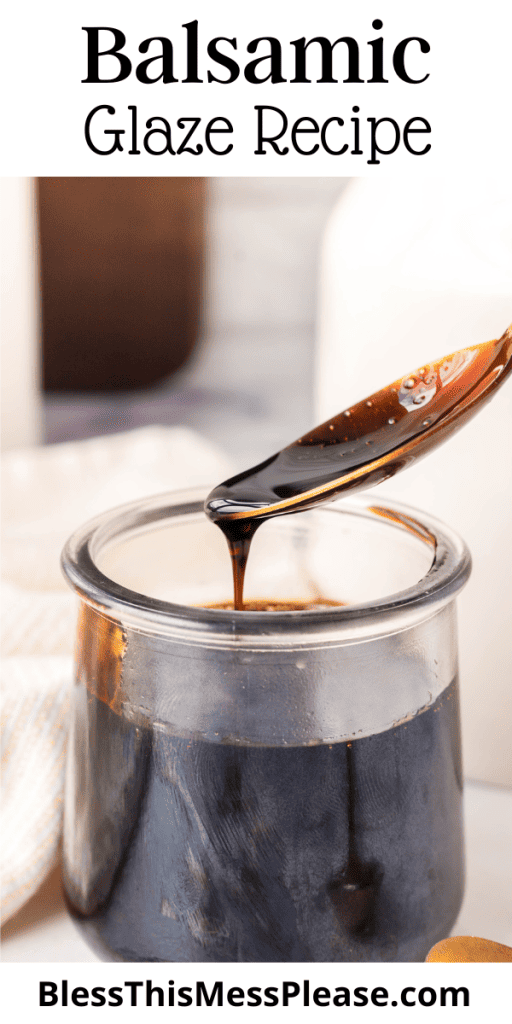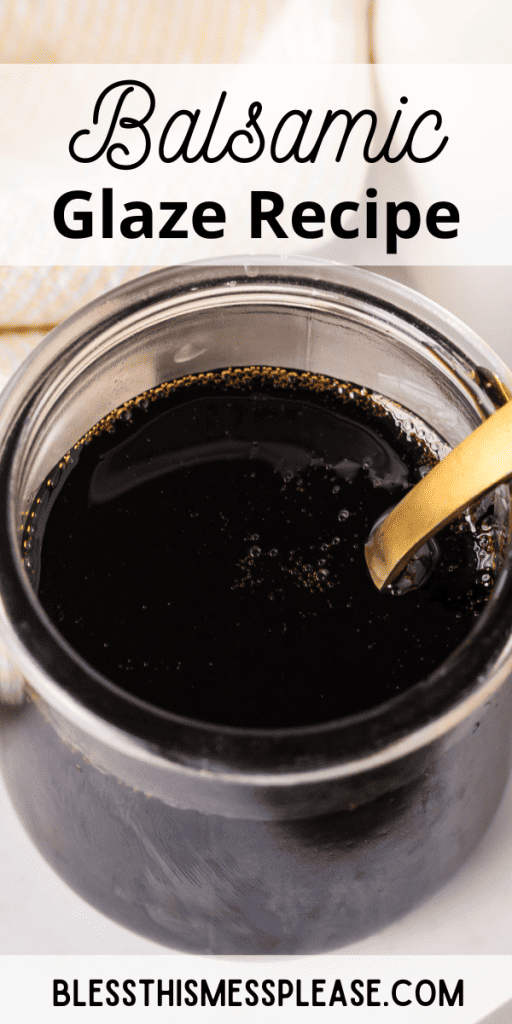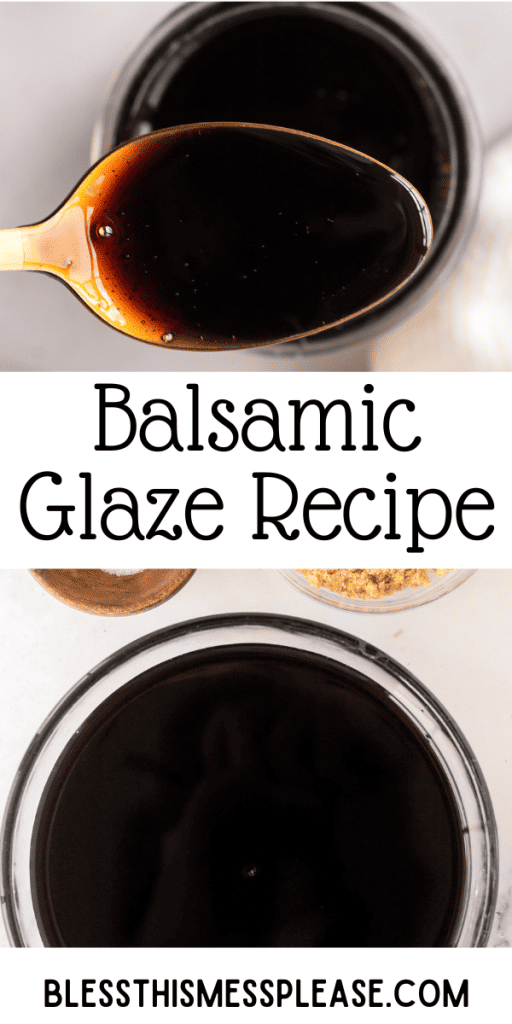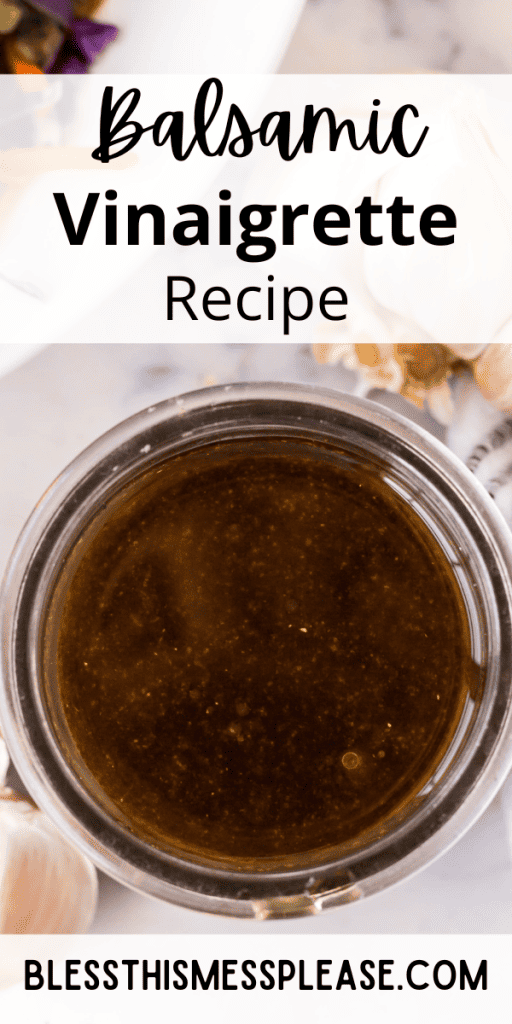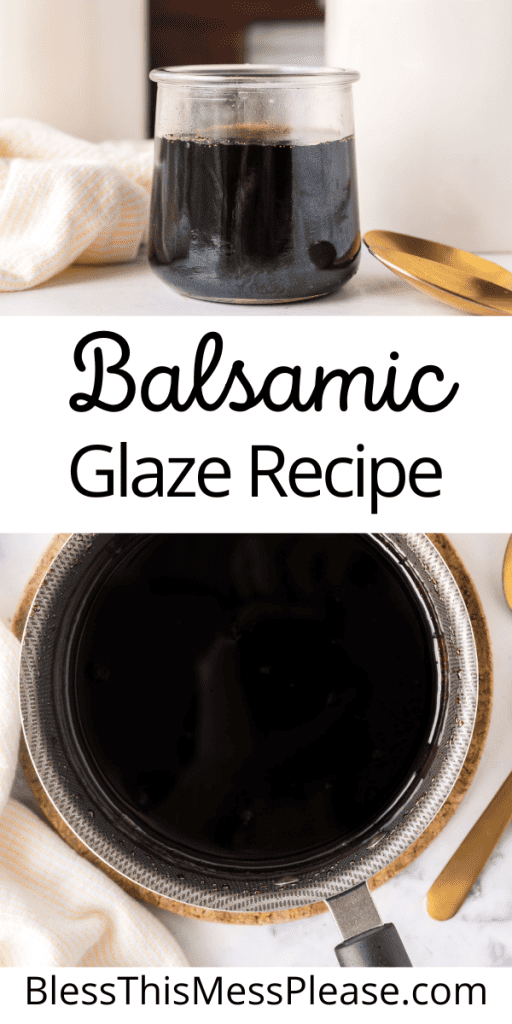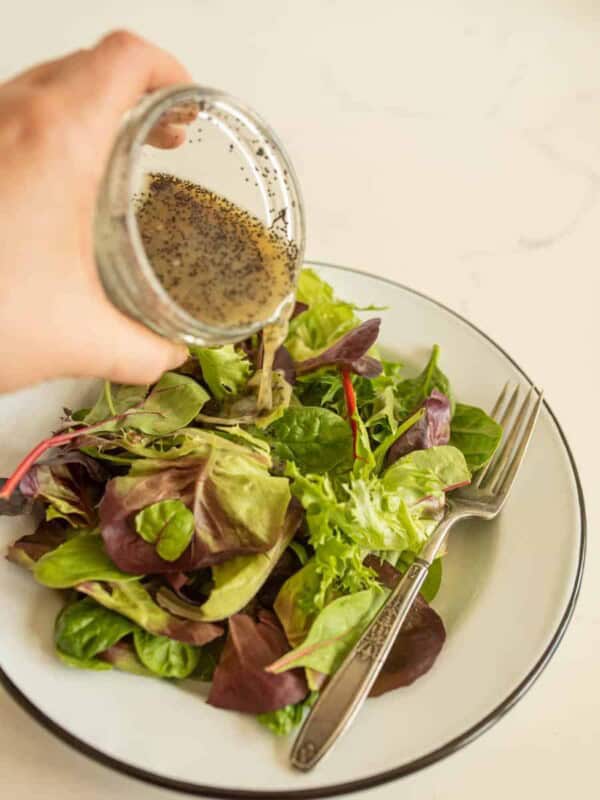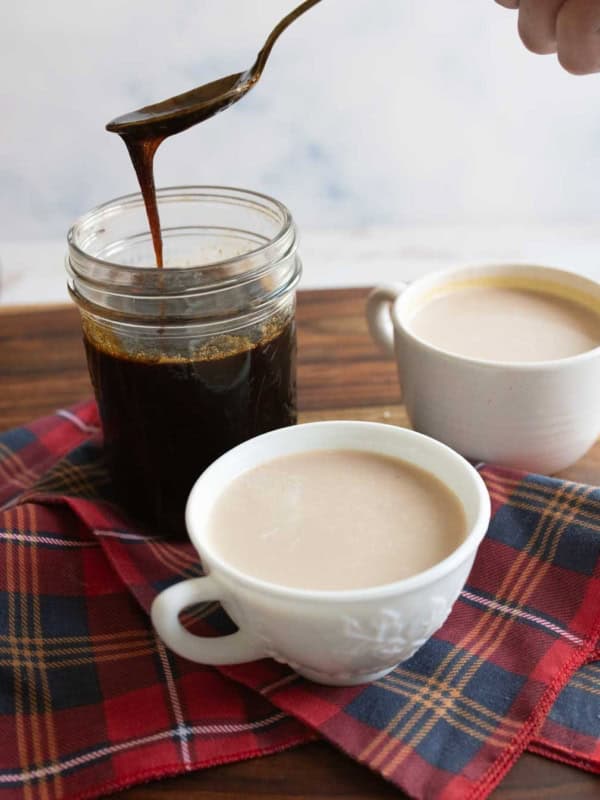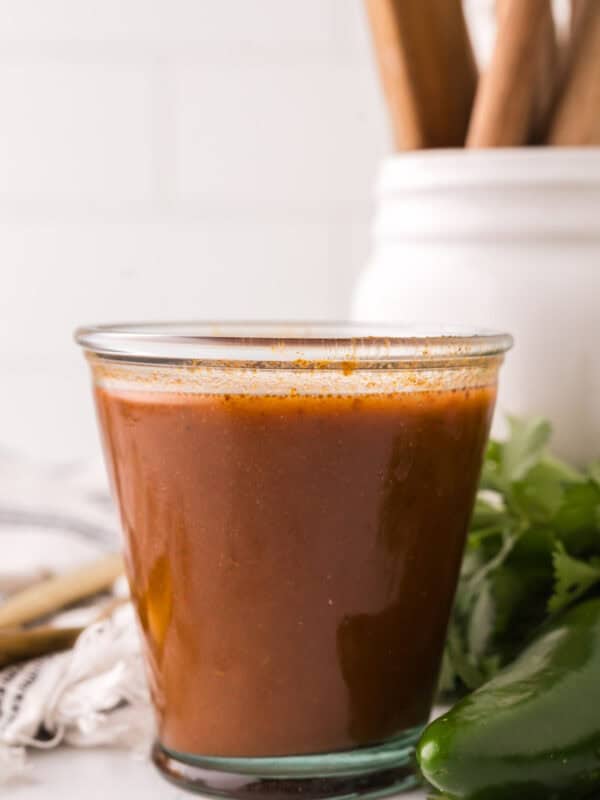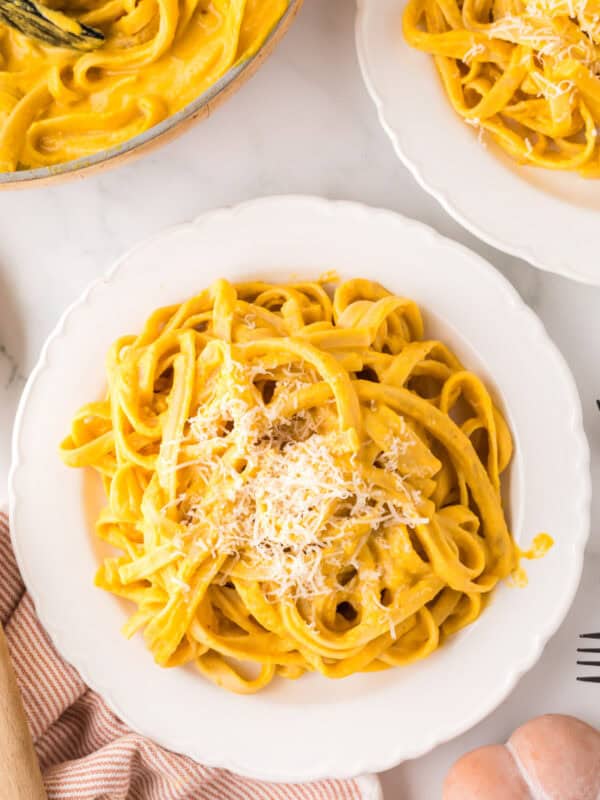Balsamic Glaze
on Jan 12, 2024, Updated Mar 13, 2024
This post may contain affiliate links. Please read our disclosure policy.
This Balsamic Glaze only uses 2 ingredients and is incredibly simple to make. It’s just balsamic vinegar cooked over the stove with brown sugar until it is thick, vibrant, and sweet!
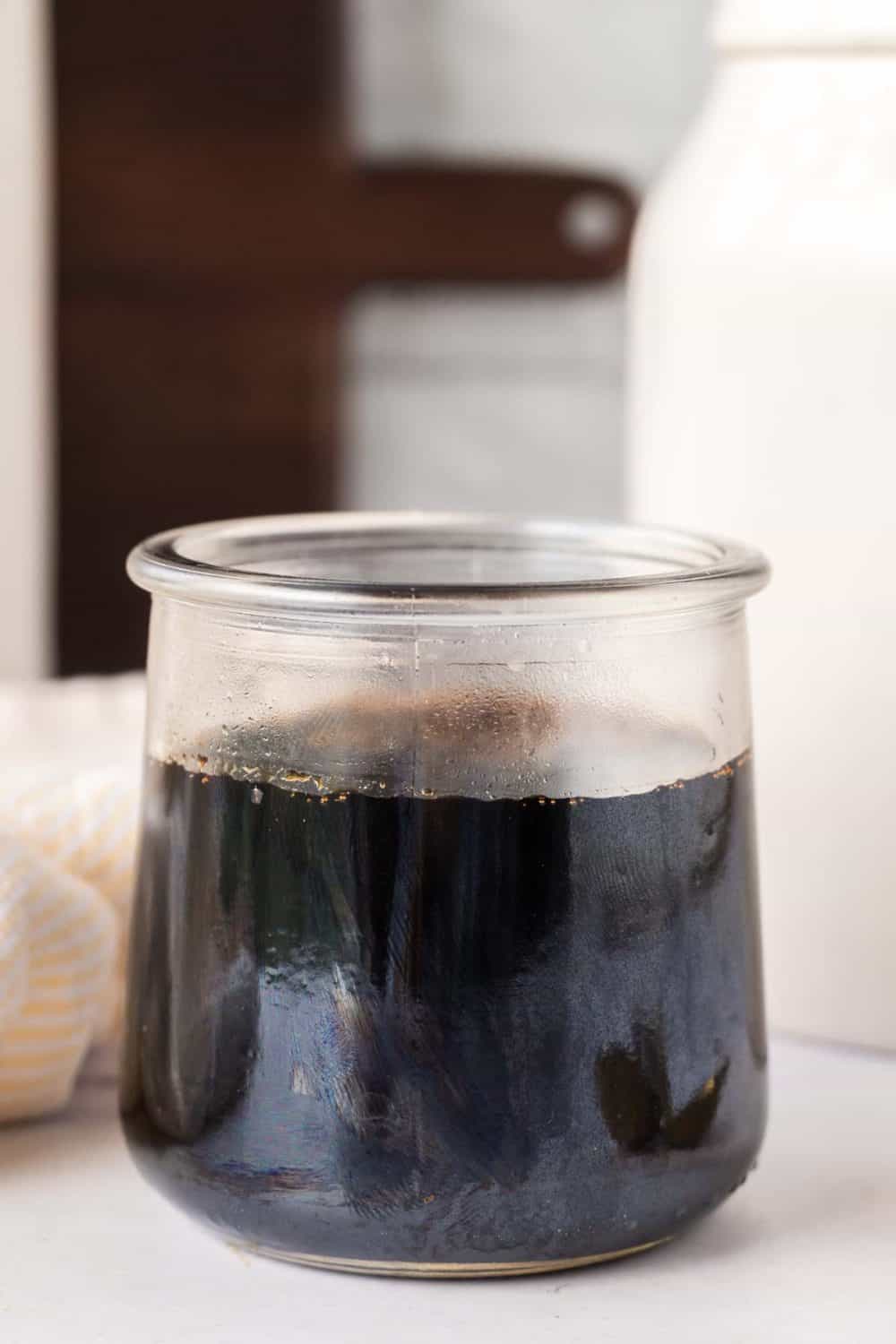
Balsamic glaze is full of flavor and has a unique contrast of flavors between the acidic and almost tart taste of vinegar and the sweet and soft brown sugar! This glaze only takes two simple ingredients that you probably already have, and a little bit of time cooking on the stove.
As the brown sugar and vinegar mix together, the mixture will begin to reduce into a thick, fragrant glaze. My favorite way to use this flavorful glaze is to drizzle it on top of a homemade margherita pizza. The flavors blend together so well and it brings the whole dish together. Grab your balsamic vinegar and brown sugar, and get started on this tasty recipe!
Table of Contents
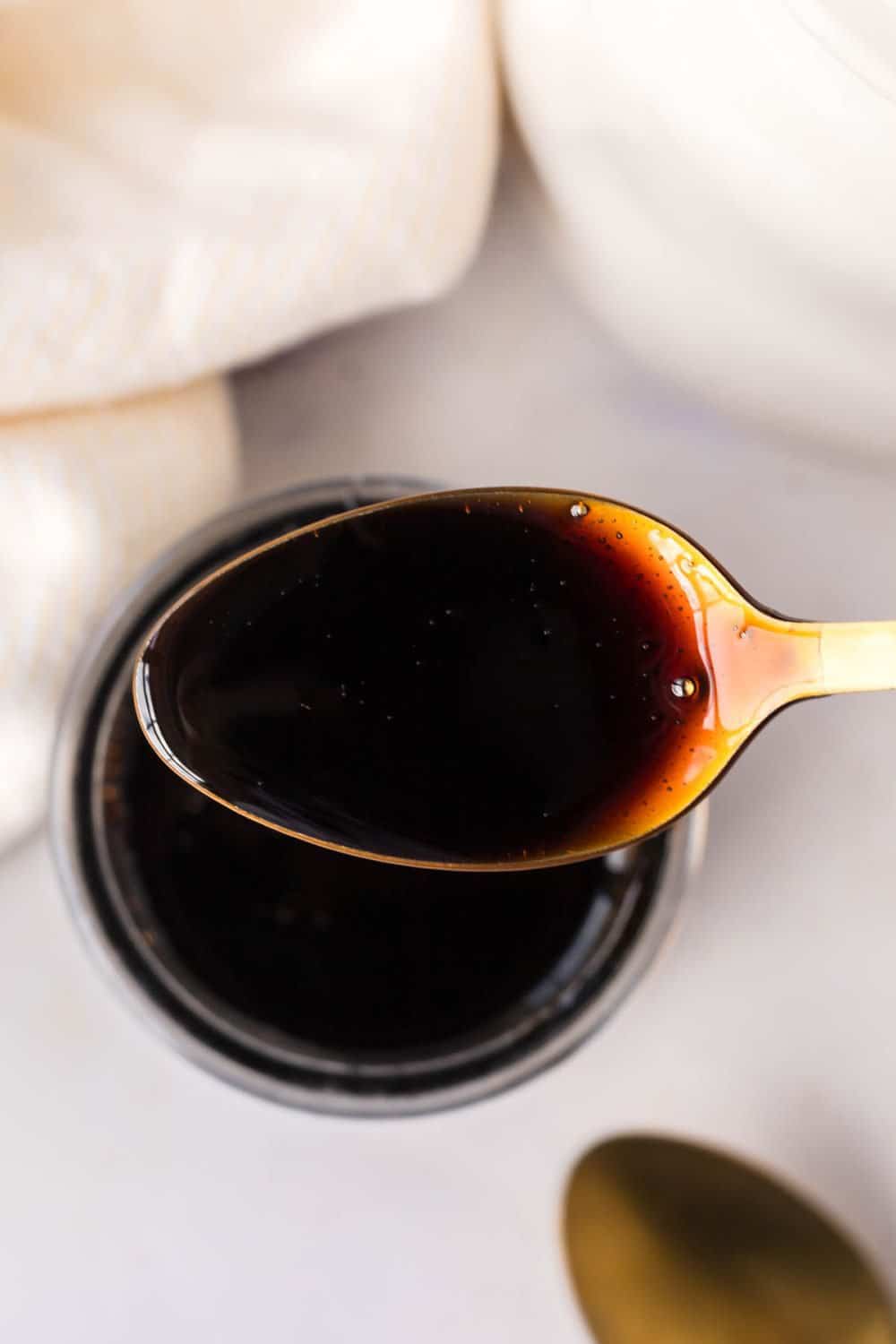
Why You’ll Love This Recipe
- It is a delightful balance of sweet and tangy.
- It can be used in a variety of ways.
- Stays good in the fridge for up to 3 weeks.
Recipe Ingredients
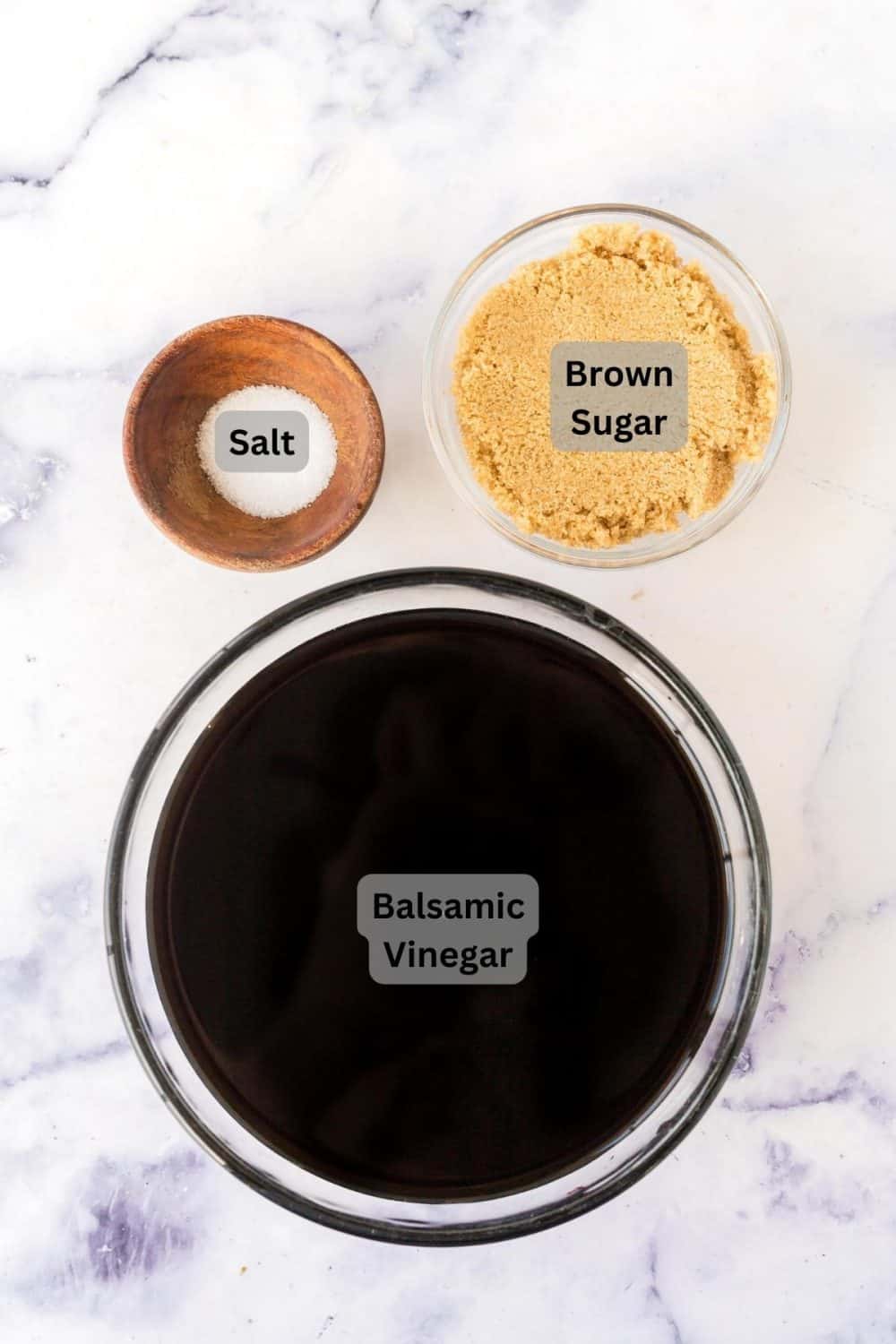
- Balsamic Vinegar—Any type of balsamic vinegar will work.
- Brown Sugar—Adds a hint of sweetness to your glaze.
See the recipe card for full information on ingredients and quantities.
How to Make Balsamic Glaze
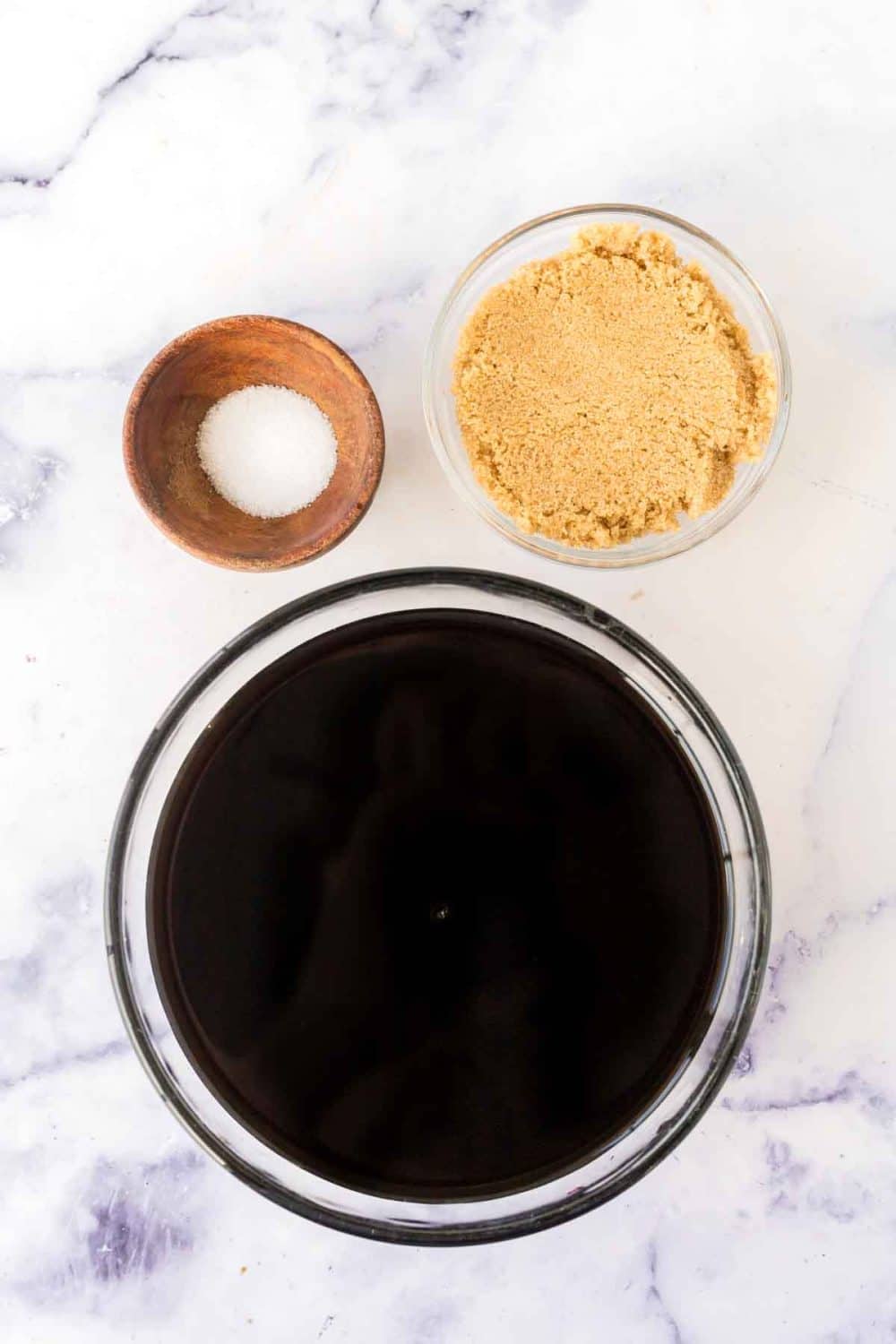
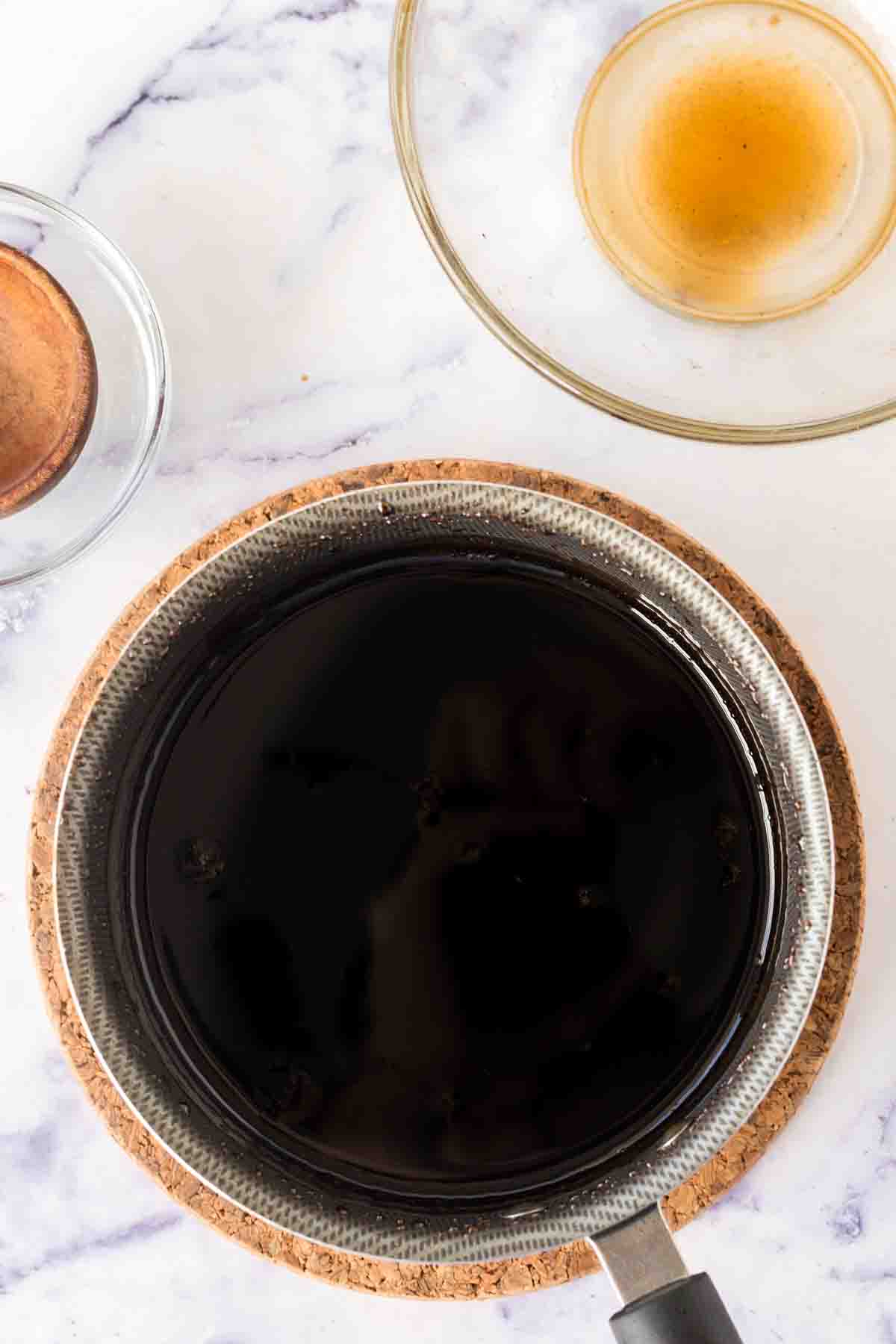
Step #1. Whisk together the balsamic vinegar and brown sugar in a small saucepan. Bring the mixture to a boil over high heat while stirring regularly.
Step #2. Reduce the heat to a medium level and allow it to cook until the glaze is thick enough to coat the back of a spoon. Stir the mixture every few minutes to keep the glaze from burning.
Recipe FAQs
Balsamic glaze is essentially a reduction of balsamic vinegar. Balsamic vinegar is made by pressing sweet white grapes as a whole, cooking the liquid over a flame, and then letting it sit out and ferment. It has a robust and powerful taste that is sweet yet tart. Balsamic glaze is made by simmering balsamic vinegar with brown sugar until it is cooked down and reduced. It is sweeter than plain balsamic vinegar and has a thicker consistency.
Balsamic glaze can take a little bit of time to cook down and thicken up, so it is important to be patient. Be sure to stir the glaze frequently so it does not burn, and resist the urge to turn up the heat. Keep the glaze at a simmer and if you feel like it is not thick yet, wait a few more minutes. Also keep in mind that even if you think the balsamic glaze looks thin in the pot, it will thicken a little bit as it cools.
While you can freeze balsamic glaze, I do not recommend doing so. If you do, there is a possibility that it will not taste the same or have the same consistency after it thaws.
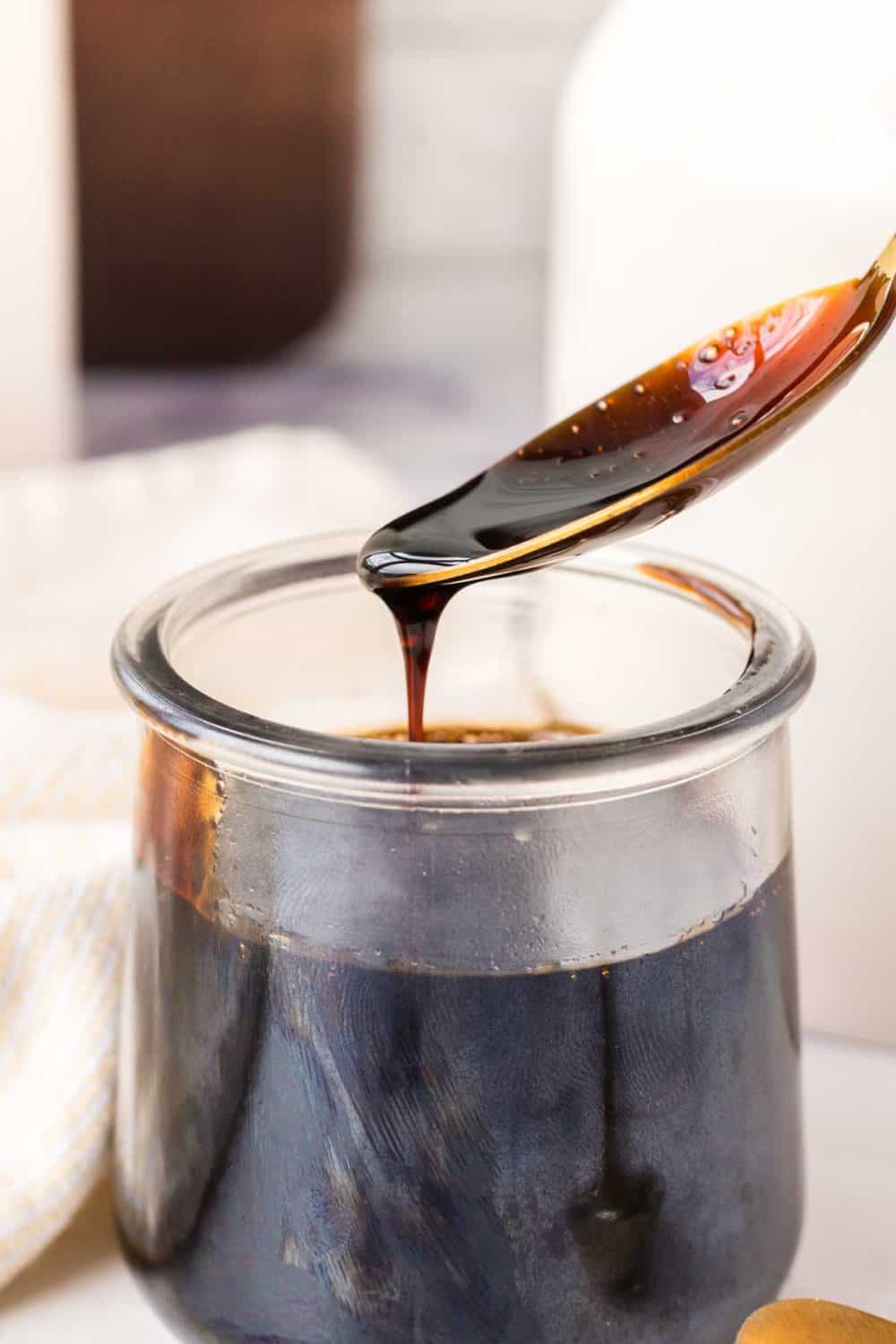
Expert Tips
- It is extremely important to stir your glaze regularly! As the mixture becomes more and more reduced, it will be prone to sticking to the pot.
- Not only does the brown sugar add some sweetness and help balance the sharp vinegar flavor of the balsamic, but it helps to speed up the cooking process as well!
- You can make balsamic glaze without brown sugar if you want, but you can expect it to take about 15-20 minutes longer to reduce.
- Be sure to use a small saucepan. If you use a large one, the vinegar will evaporate too quickly and it will not have the perfect thick consistency!
- You can check to see if your glaze is done by dipping the back of a metal spoon in the glaze. The glaze should coat the back of the metal spoon.
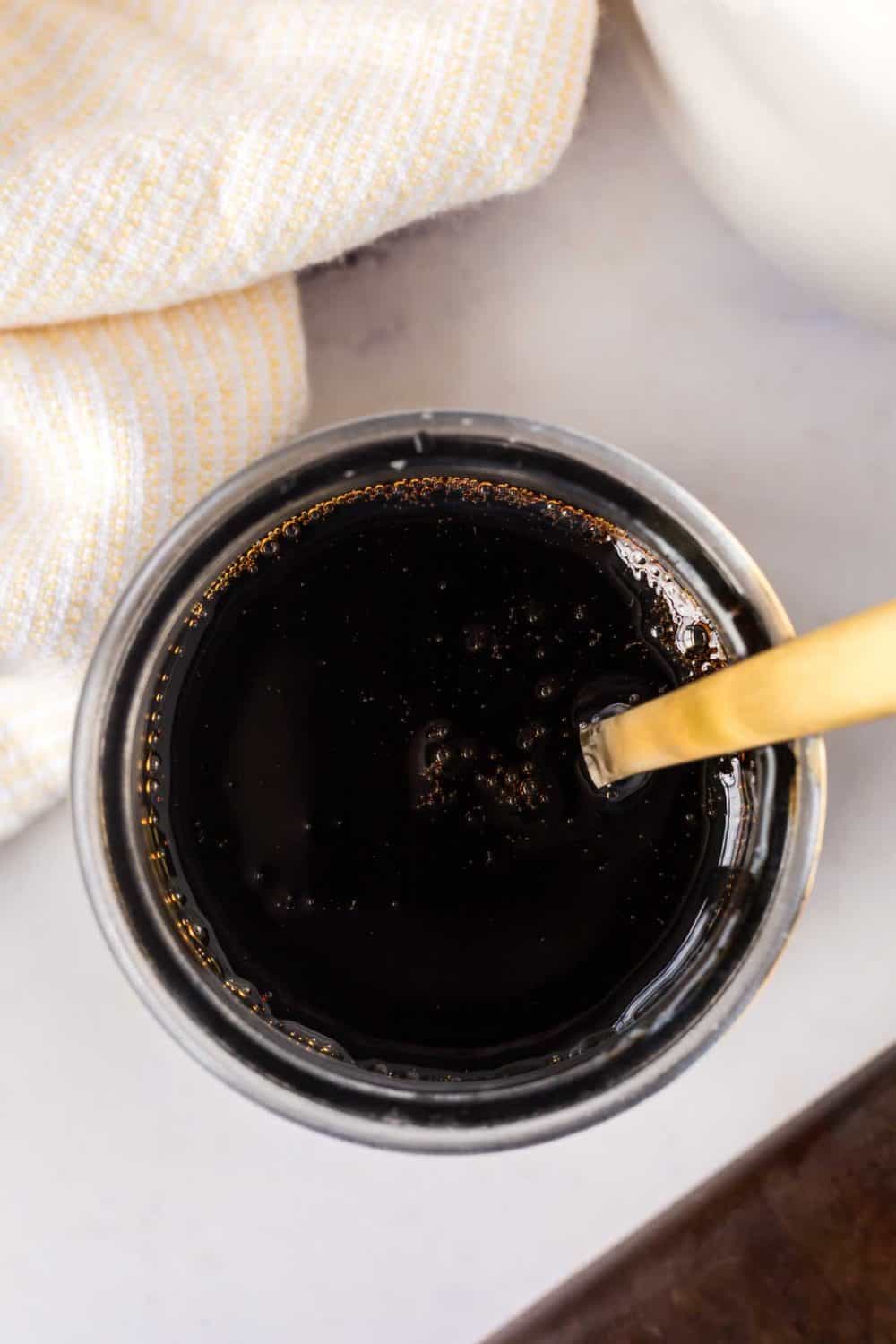
How to Serve and Store Balsamic Glaze
You can use this glaze for a variety of dishes! Balsamic glaze goes wonderfully drizzled on fruit, veggies, or crackers! You can also use it as a simple dressing for a green salad or this grilled chicken salad. This glaze tastes delicious on bruschetta or drizzled on top of a margherita pizza! You can experiment with it and find what you like best with balsamic glaze!
You can store this glaze in the fridge for up to 3 weeks in an airtight container. We prefer to use a mason jar with a tight fitting lid, but either will work!
More Condiment Recipes To Consider
Simple Gingerbread Recipes
Homemade Gingerbread Syrup: Cozy Holiday in a Bottle
Condiments, Marinades & Spreads
Easy Homemade Red Enchilada Sauce
Pasta Dishes
Pumpkin Alfredo
Did you make this recipe? Leave a ⭐️ review and share it on Instagram, Facebook, or Pinterest!
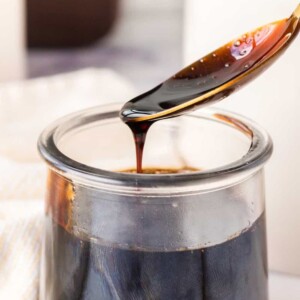
Balsamic Glaze
Ingredients
- 2 cups balsamic vinegar
- 1/3 cup brown sugar
Instructions
- Whisk together the balsamic vinegar and brown sugar in a small saucepan.
- Bring the mixture to a boil over high heat while stirring regularly.
- Once the mixture reaches a boil, reduce the heat to a medium level and allow it to cook for 25 minutes, or until the glaze is thick enough to coat the back of a spoon. Stir the mixture every few minutes to keep the glaze from burning.
- Serve and enjoy!
Notes
- This makes about 1 cup of balsamic glaze.
- It is very important to stir your glaze regularly. As the mixture becomes more and more reduced, it will be more prone to sticking to the pot.
- The brown sugar helps speed up the cooking process and balance the sharp vinegar flavor of the balsamic vinegar.
- You can make a balsamic glaze without brown sugar but you can expect it to take about 15-20 minutes longer to reduce.
- You can store your glaze in the fridge for up to 3 weeks in an airtight container. We prefer to use a mason jar with a tight fitting lid.
- This glaze makes a great addition to garden salads and can also be used as a dip served alongside crackers, fruit, veggies, etc.

